Every story has a beginning. The birth of the Czech nation and state is associated with the Přemyslid dynasty, to which the very first kings in our lands belonged. To defend their position, they built a fortifications network consisting of several hill-forts – Tetín, Libušín, Levý Hradec, Stará Boleslav, Libice nad Cidlinou, Budeč, Lštění and Dřevíč.
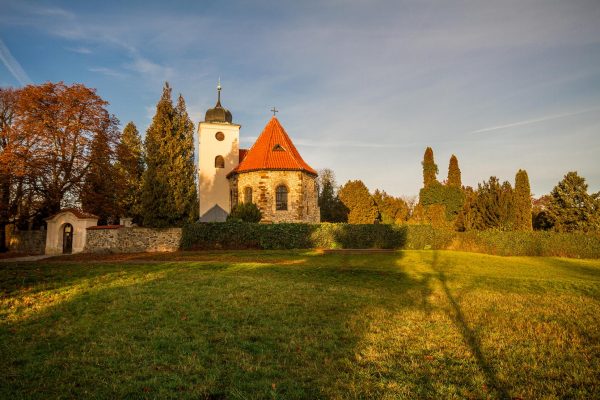
Levý Hradec
The fortification lies in the town of Roztoky and was one of the first centres of power of the Přemyslid state. The lords of this ruling dynasty set to work on the construction of their main seat at the turn of the 9th and 10th century, where Prague Castle stands today. In order to protect it from their enemies, they created a network of strategic military points – a defensive network consisting of hill-forts in the Central Bohemian region.
Levý Hradec is also considered to be the cradle of Christianity in Bohemia. The oldest Christian church in our lands was established here. After the city of Prague had garnered all the fame and glory for itself and the power of the Přemyslids was secure, the importance of Levý Hradec began to wane and, spurred by less accurate historical chronicles, the beginnings of Christianity in the Czech lands became mistakenly associated with Vyšehrad. This historically and religiously significant site rose to prominence once again at the time of the National Revival, and, due to its history, became the destination of annual pilgrimages.
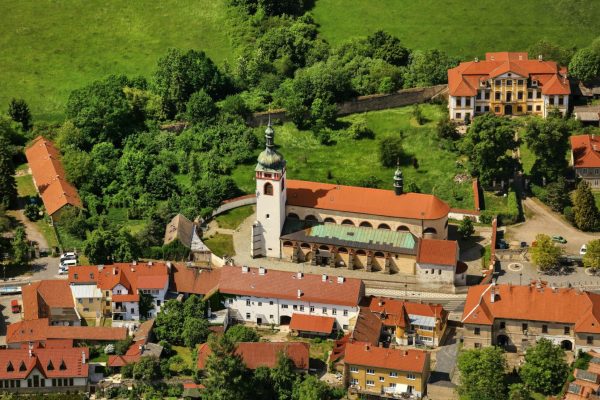
Stará Boleslav
Stará Boleslav was merged with another independent town, Brandýs nad Labem, in 1960. It is considered to be the cradle of Czech statehood and is the oldest pilgrimage site in our lands. The local religious buildings are dedicated to the Christian martyr St Wenceslas’ and Marian traditions, and in the pilgrimage Church of the Assumption of the Virgin Mary, is the so called ‘Palladium of Bohemia’ – a metal relief, the national importance of which is comparable to that of the crown jewels.
Even in the early days of the formation of the Přemyslid state, Stará Boleslav was perceived as significant, with a hill-fort built on the site at the turn of the 9th and 10th century. One of the tragic events that influenced the Přemyslid dynasty is also associated with this location. In 935, St Wenceslas, the Duke of Bohemia and later Patron Saint of the Czech nation was murdered here.
Even after the throne was taken by other royal dynasties, Boleslav was not forgotten. For example, Emperor Charles IV often stayed here, writing part of his autobiography Vita Caroli at nearby Toušeň castle.
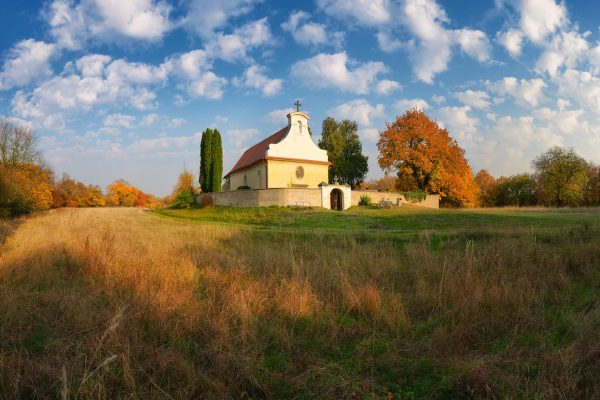
Libušín
For many years, the hill-fort of Libušín was unjustly overlooked, as Prague’s Vyšehrad literally took its place. The Chronicle of Kosmas relates that, following the death of Krok, his youngest daughter Libuše ruled the lands from her seat at – Libušín. It was from here that she foretold the great fame of Prague and had her husband-designate Přemysl Oráč sent-for.
The setting of all these legends was thus not Vyšehrad, but Libušín. The legend was rewritten at the time of Emperor Charles IV, by the emperor’s chronicler himself, Přibík Pulkava of Radenín. The libretto of the famous opera by Bedřich Smetana was created based on this very text, and Libušín was pushed into the background.
And yet, Libušín was the ancient and significant hill‑fort of the Přemyslids. A settlement was already to be found on the Libušín promontory in the 6th century and at the end of the 9th a hill-fort of unprecedented scale was built there. Following the end of the lineal wars, a period when the Přemyslids no longer faced an enemy in their own lands, it lost its strategic and military importance. Its defensive purpose and use only lasted until the turn of the 11th and 12th century, but it was certainly not abandoned afterwards. The peasants, winemakers and craftsmen continued to make use of everything that the picturesque and fertile location offered.
The modern history and development of the town were greatly influenced by the expansion of the mining industry in the 19th century.
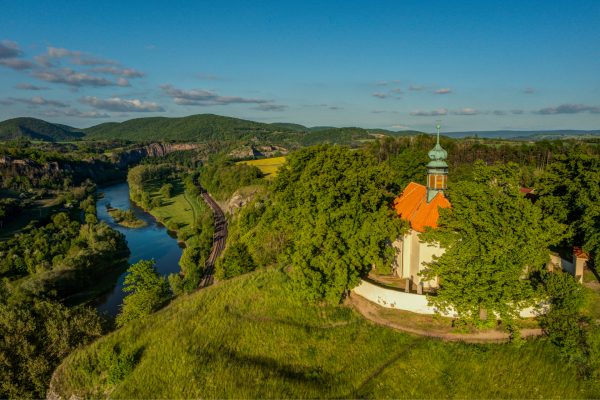
Tetín
Two significant female characters from our history are associated with the founding of Tetín. The first is that of the legendary Teta, as known from tales and lore, the daughter of Duke Krok, and sister of the famous duchess and visionary, Libuše.
The story behind the name of the village is thus evident. The second, and in this case historically confirmed female figure known to have stayed at the fort was St Ludmila. Duchess Ludmila had considerable influence on her grandson, the future Duke St Wenceslas, whom she raised here for a period. It is said that her daughter-in-law Drahomíra was jealous of her and had her murdered at the hands of hired cut-throats, who strangled the pious and much-loved Ludmila at Tětín with her own scarf in the year 921. Ludmila was canonized in the 11th century, becoming the first saint to be associated with the Přemyslid dynasty.
Tetín can thus be regarded as the cradle of Christianity in our country and as a location that is closely related to Czech statehood.
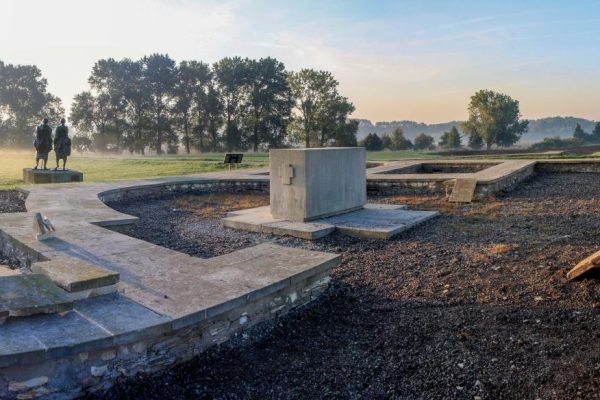
Libice nad Cidlinou
The most important period for Libice nad Cidlinou is considered to be the second half of the 10th century, when the Slavníkovci family were based here. The wealthy Lord Slavník chose Libice, the site of the confluence of the rivers Elbe and Cidlina, for his seat. He built a fortified complex, featuring a mint, a stone church and a palace.
After the death of Lord Slavník, his son Soběslav took over, whose approach to politics was much more confident than his father’s. The expansionism of Soběslav was much disliked by the Přemyslids, and there were disputes between the two families. These culminated in the year 995. The Přemyslids overran Slavkov castle, murdering all the inhabitants and torching the place. After this violent act, the Přemyslids became the sole rulers of Bohemia.
However, Libice did not disappear with the demise of the Slavník family, and continued to be one of the important centres of a unified Bohemia. After a while, however, its importance began to decline. After the fire of 1130 the fort ceased to exist and all that remained of the estate was the medieval village. Over the course of the 19th century, the exclusively agricultural village gradually transformed into the cradle of new industries and businesses.
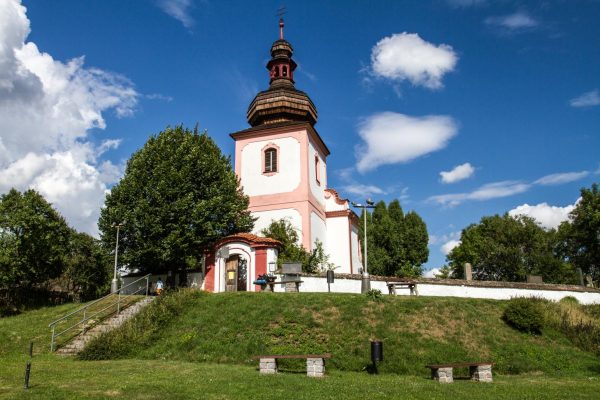
Lštění
The village of Lštění location was inhabited long ago, being the site of an ancient Roman settlement, where Roman legionnaires guarded the trade route winding across Europe from the Roman Empire up to the North Sea. The rocky promontory was later settled by the Slavs, and in the first half of the 9th century a hill-fort was built, which would later be used by the Slavníkovci.
The fort of Lštění later became one of the surrounding fortresses serving to defend the Přemyslid state. At that time it consisted of a forecourt and an acropolis, protected by massive walls. The only stone building was the church, with even the duke’s palace being only a simple log cabin. How and when Lštění ceased to exist as a palisade hill-fort remains unknown. It could have occurred in the early 13th century when this type of fortified settlement began to be replaced by stone castles.

Budeč
The previous name of the village was Buč, and it was only changed to Budeč in 1925. The oldest written mention of Budeč dates back to 1251, when the brothers Vernhardt and Oldřich of Budeč resided here. They had a fortress built in the village, where the château now stands.
In another written document, this time from the 14th century, the parish church of the Annunciation of the Virgin Mary is mentioned, its crypt the final resting place of many members of the nobility. Budeč was the centre of a particular estate which changed hands many times and in 1662 it became the property of the Premonstratensian monastery. At that time, the ancient medieval fortress was converted into an early Baroque château, to which Classicist elements were added in the 19th century.
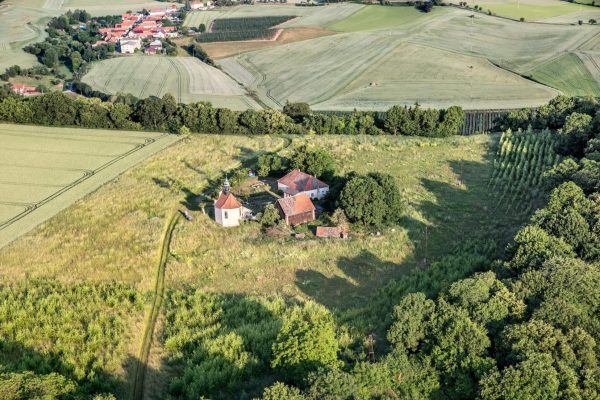
Dřevíč
The hill-fort of Dřevíč lies on the hill of the same name and there is evidence to show that the site has been settled since the Neolithic. Its importance increased even further at the time of Přemyslid rule, who made the strategically located fortress part of their defensive network.
Dřevíč as a hill-fort situated in the north-west of the Přemyslid state was therefore at the height of its glory from the 10th to the 13th century. The surviving written records from 1004 tell of its conquest by Duke Oldřich. In the 12th century, Dřevíč was the administrative centre of the adjacent region, but it was later abandoned and in the ensuing century ceased to exist. The site was still inhabited, but only in the form of a manor in its eastern reaches.
